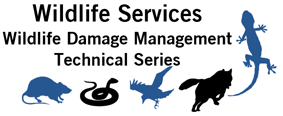United States Department of Agriculture: Animal and Plant Health Inspection Service

Wildlife Damage Management Technical Series
Date of this Version
8-2020
Document Type
Article
Citation
Glow, M.P., K.C. VerCauteren, and N.P. Snow. 2020. Feral Swine. Wildlife Damage Management Technical Series. USDA, APHIS, WS National Wildlife Research Center. Fort Collins, Colorado. 21p.
Abstract
Feral swine (Sus scrofa; Figure 1), also known as feral hogs, feral pigs, wild pigs, wild boar, or other similar derivations, are a non-native species considered to be one of the most destructive invasive terrestrial vertebrates in North America. While feral swine populations remained relatively small and confined in the continental United States following initial introductions by European explorers during the 15th century, substantial range expansion has occurred across every geographical region of the United States (Figure 2). This expansion has primarily been attributed to human-mediated movements, predominately for the purpose of establishing populations for recreational hunting, and facilitated by feral swine’s highly adaptable biological and behavioral traits (e.g., habitat generalist, opportunistic omnivore, extremely high reproductive rate). Consequently, ecological, agricultural, and urban/suburban damages and human health and safety risks have increased substantially across the United States, requiring extensive management efforts to mitigate their destructive impacts.
Included in
Behavior and Ethology Commons, Biodiversity Commons, Other Animal Sciences Commons, Other Ecology and Evolutionary Biology Commons, Population Biology Commons, Terrestrial and Aquatic Ecology Commons


Comments
Wildlife Damage Management Technical Series
U.S. Department of Agriculture Animal & Plant Health Inspection Service Wildlife Services August 2020